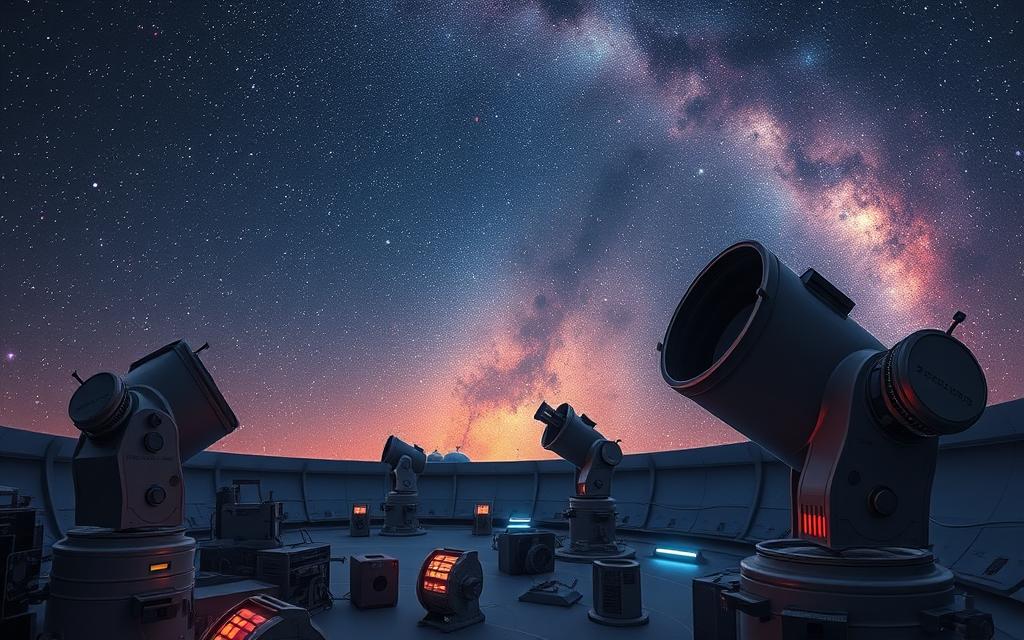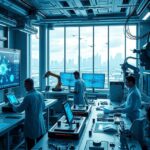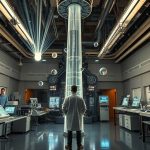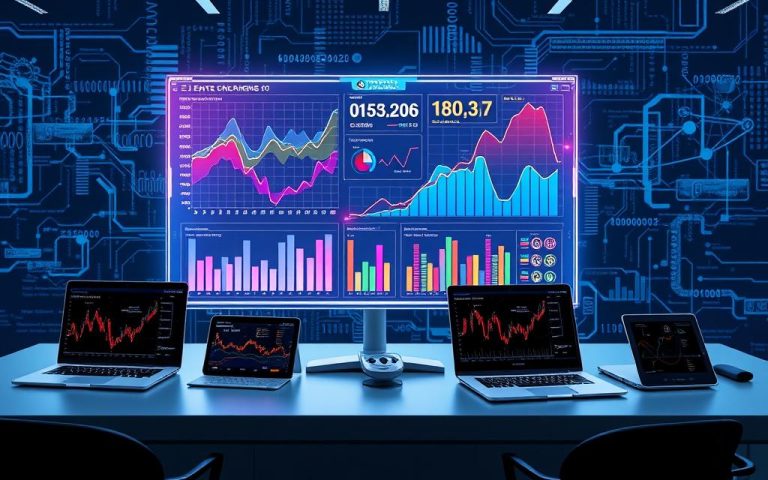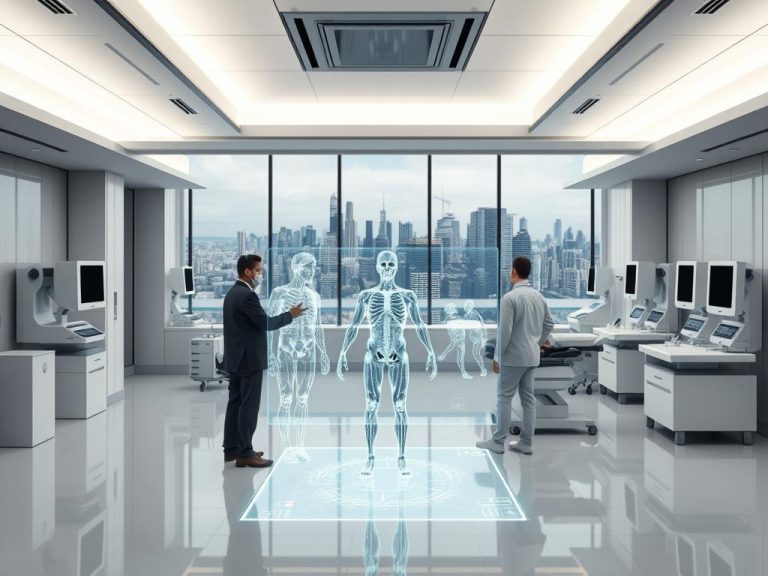Is a Telescope Considered a Form of Technology?
Is a telescope technology? This question is interesting and deserves a thorough look. A telescope lets us see far-off space objects by bending light. It uses lenses or mirrors. But technology is more than just gadgets. It includes complex systems and ways that help telescopes work, like computer software for looking at data and systems that watch the sky without a person.
The history of telescopes is full of changes, from simple ones to advanced ones in space. The invention of the Newtonian reflector changed science a lot. It made us know more about space. This shows telescopes are more than tools for looking at stars. They stand for the advanced tech that is key in today’s astronomy.
Understanding the Definition of Technology
Technology covers a wide range of tools and systems made for real-world use. To understand technology, we must look at both the tools and how they are made and used. This exploration helps us see technology as more than gadgets, but as major advances throughout history.
What Constitutes Technology?
Technology is all about solving problems and boosting human capability, using science. We can classify technological advances as:
- Simple Tools: Basic items that help with daily tasks.
- Complex Machines: Advanced creations from new ideas.
- Electronic Systems: Tech that improves performance efficiently.
This wide view helps us understand how views on technology have changed and grown.
Historical Perspectives on Technology
Technology’s history shows key moments that changed society. It starts in 1608 in the Netherlands, with the first telescopes by spectacle makers. Their early work and Galileo Galilei’s improvements, like better telescope design, laid the groundwork for future discoveries, including the moons of Jupiter detailed in his work “Starry Messenger.”
The journey of the telescope marks big steps forward, like:
| Year | Event | Significance |
|---|---|---|
| 1608 | Creation of the first telescope | Started the era of modern optics. |
| 1610 | Galileo’s improvements | Better magnification led to major space discoveries. |
| 1990 | Launch of the Hubble Space Telescope | Changed our view of space with its pictures. |
| 2021 | Launch of the James Webb Space Telescope | It’s set to be history’s most powerful telescope, opening new space exploration doors. |
This history underlines how technology grows and its big impact on our understanding of space and the universe.
The Evolution of Telescopes: An Overview
The story of how telescopes have evolved is truly fascinating. It begins with the early refracting telescopes and moves to the revolutionary reflecting designs. Along the way, improvements in materials, optics, and tech have changed how we design telescopes today.
From Refractors to Reflectors
In 1608, the first known telescope appeared in the Netherlands, thanks to Hans Lippershey. This invention quickly spread across Europe. Later, John Dollond introduced an achromatic lens in 1733. This lens reduced colour distortions, greatly improving refracting telescopes.
Then, Sir Isaac Newton made a big leap in 1668 with his reflecting telescope. This design used mirrors to collect light, leading to better optical quality. Over time, bigger mirrors and new mirror coatings, like Léon Foucault’s silvering in the 19th century and mirror aluminizing in the 1930s, made telescopes even better.
Modern Developments in Telescope Design
The late 20th century was a crucial time for telescope advancements. The creation of radio telescopes opened new possibilities for space research. This period saw major innovations like computer-controlled mounts and active optics. This technology made it possible to build huge telescopes, such as the 10-meter Keck telescopes.
Today, technology has transformed how we use telescopes. The Hubble Space Telescope, launched in 1990, changed how we view the universe. Following in its footsteps, the James Webb Space Telescope, launched in 2021, aims to explore the universe in infrared. These advancements help astronomers study space in ways we’ve never seen before.
Is a Telescope Considered a Form of Technology?
Telescopes have changed how we see the universe. They let scientists study stars and planets in detail. This has led to big discoveries, like galaxy redshifts and cosmic microwave background radiation.
The Role of Telescopes in Scientific Advancements
Telescopes are key for exploring space. They’ve grown from simple to advanced since the 17th century. This shows a huge development in how we make and use them.
The achromatic lens, invented in 1757, made telescopes much better. It cuts down chromatic aberration, making images clearer.
Comparison with Other Technological Instruments
Telescopes and other instruments each have special benefits. For observing the sky, they work in different but complementary ways. This helps scientists make new discoveries.
Here is how telescopes compare to other tools:
| Instrument Type | Function | Key Advantage |
|---|---|---|
| Telescopes | Capture electromagnetic radiation from celestial objects | Provide visual insights into astronomical phenomena |
| Spectrometers | Analyse light spectra | Reveal chemical composition and physical properties |
| Interferometers | Combine light from multiple sources | Enhance resolution beyond what individual telescopes can achieve |
Telescopes are crucial in astronomy. They work with other instruments to expand our knowledge of the universe.
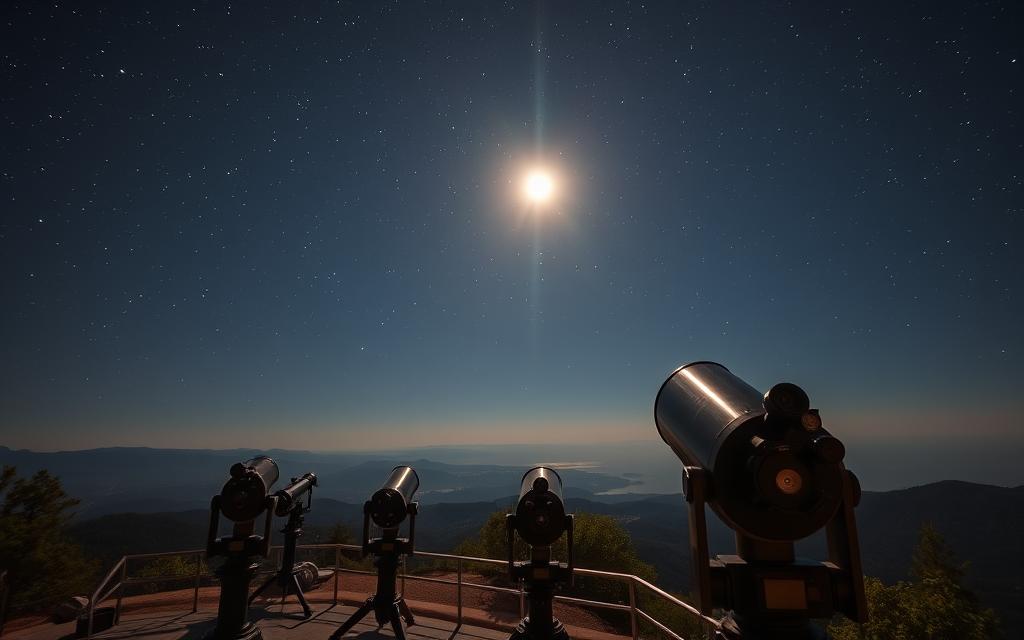
The Importance of Computational Technology in Astronomy
Computational technology plays a key role in astronomy, especially in improving how we collect data. It combines advanced software with telescope hardware, making huge leaps in automation. This means modern telescopes can focus on and study stars and planets by themselves, reducing manual work. Thanks to this, astronomers can gather large amounts of data and watch many objects at once.
Automation in Data Collection
Telescopes now use high-tech sensors for smooth data gathering. For example, the James Webb Space Telescope gathers about 235 gigabytes of data every day. Automation speeds up both data collection and the discovery of new celestial phenomena. The Legacy Survey in Space or Time (LSST) will bring in about 15 terabytes of data nightly for ten years. This shows the huge scale of data collection in current astronomy.
The Impact of Computers on Telescopic Observations
Computers are vital for more than just collecting data; they’re essential for analyzing it. Analyzing the vast data from the LSST could take 380 years with old methods. However, machine learning cuts this to about three and a half hours. This dramatic decrease in time highlights how vital computational tools are for advancing the field.
The next-gen observatories, like the Vera C. Rubin Observatory, will produce about 60 petabytes of raw data in ten years. They need much stronger computational support than before. U.S. observatories often fall behind in storing this data, due to money and cultural challenges. Finding better ways to store data is critical for future research in astronomy.
Computational technology leads to groundbreaking discoveries, like new planets, using machine learning. The changes brought by technology in data analysis and automation open new doors for those interested in the stars. Those curious can explore more about this fusion of fields in programs like CS+Astro at the University of Illinois.
Applications of Telescopes in Various Research Fields
Telescopes are crucial across many areas of research, thanks to technological progress. They are key in space exploration, with advances in both ground and space observatories. These tools play vital roles.
Space Exploration and the Hubble Telescope
Since 1990, the Hubble Space Telescope has been a major success in space exploration. It captures amazing images and data, helping us understand the universe better. The Hubble has found out about dark energy, how galaxies change, and new planets outside our solar system. Its work has provided insights not possible with telescopes on the ground because it can see in ultraviolet light, avoiding Earth’s atmosphere’s blurring effects.
Ground-Based and Space-Based Telescope Innovations
Ground telescopes are still essential in cosmology and astronomy, thanks to new innovations. Adaptive optics systems fix blurring caused by the air, making images clearer. At the same time, telescopes like the James Webb Space Telescope look in infrared light, giving us a better view of the universe. New detectors, such as CCDs and CMOS, make these telescopes more sensitive. This lets researchers spot dimmer objects and explore the universe more deeply.
Conclusion
Telescopes are a key technology, starting a major change in the 17th century. They let us see the universe in new ways. This step was crucial for the Scientific Revolution. It changed how we understand space.
Galileo Galilei played a big role in this. He improved telescopes, making objects appear twenty times closer. His work challenged old beliefs and sparked new discoveries.
Telescopes have greatly changed our view of the universe. From simple lenses to the Hubble Space Telescope, progress has been amazing. Each innovation brings us closer to understanding the cosmos.
What’s next for telescopes is very exciting. Future technologies will reveal more about space. This will push our knowledge even further. Telescopes will continue to be at the heart of our exploration.
To learn more about telescopes and their development, check out this comprehensive resource.
FAQ
Is a telescope considered a form of technology?
Yes, a telescope is a type of technology. It’s an optical instrument that helps us see faraway objects clearer. It does this using lenses or mirrors. The technology includes the device and how it’s used to get the best performance.
What constitutes technology?
Technology involves applying knowledge for practical purposes. It covers tools, systems, and methods made to fix problems and boost human abilities. This ranges from basic tools to complex machines and gadgets.
What are the historical perspectives on technology?
Over time, technology has grown a lot, influenced by science and culture. It started with simple inventions like the telescope in the 1600s. Today, it’s a key part of human progress and solving problems.
What is the evolution of telescopes?
Telescopes started with designs that used lenses. Then came reflecting telescopes by Isaac Newton. Now, we have radio and infrared telescopes. These advancements let us see more of space.
How have modern telescopes developed?
Today’s telescopes have high-tech features. They use computers to aim precisely and collect data. Examples include the Hubble and James Webb Space Telescopes. These have greatly improved how we observe space.
What role do telescopes play in scientific advancements?
Telescopes are key for science, helping to study the sky in detail. They’ve led to big discoveries like galaxy movements and cosmic radiation. These findings have changed how we see the universe.
How do telescopes compare with other technological instruments?
Telescopes specifically look at electromagnetic radiation from space. Other tools like spectrometers help them, giving us more data to study the stars and galaxies.
What is the importance of computational technology in astronomy?
Computers have changed astronomy, making telescopes automatic in targeting and observing. This makes collecting and studying data much quicker, speeding up new discoveries.
How do computers impact telescopic observations?
Computers are crucial for handling the huge data from telescopes. They allow us to deeply analyze space data and make accurate cosmic models. This helps us learn more about the universe.
What are the applications of telescopes in space exploration?
Space telescopes like the Hubble have been crucial in space study. They’ve given us important info on galaxies, dark energy, and planets outside our system. They’re essential for exploring space.
What innovations have been made in ground-based and space-based telescopes?
Ground telescopes now have adaptive optics for clearer images. Space telescopes see wavelengths blocked by Earth’s atmosphere. Together, they form a powerful set of tools for observing the universe.
